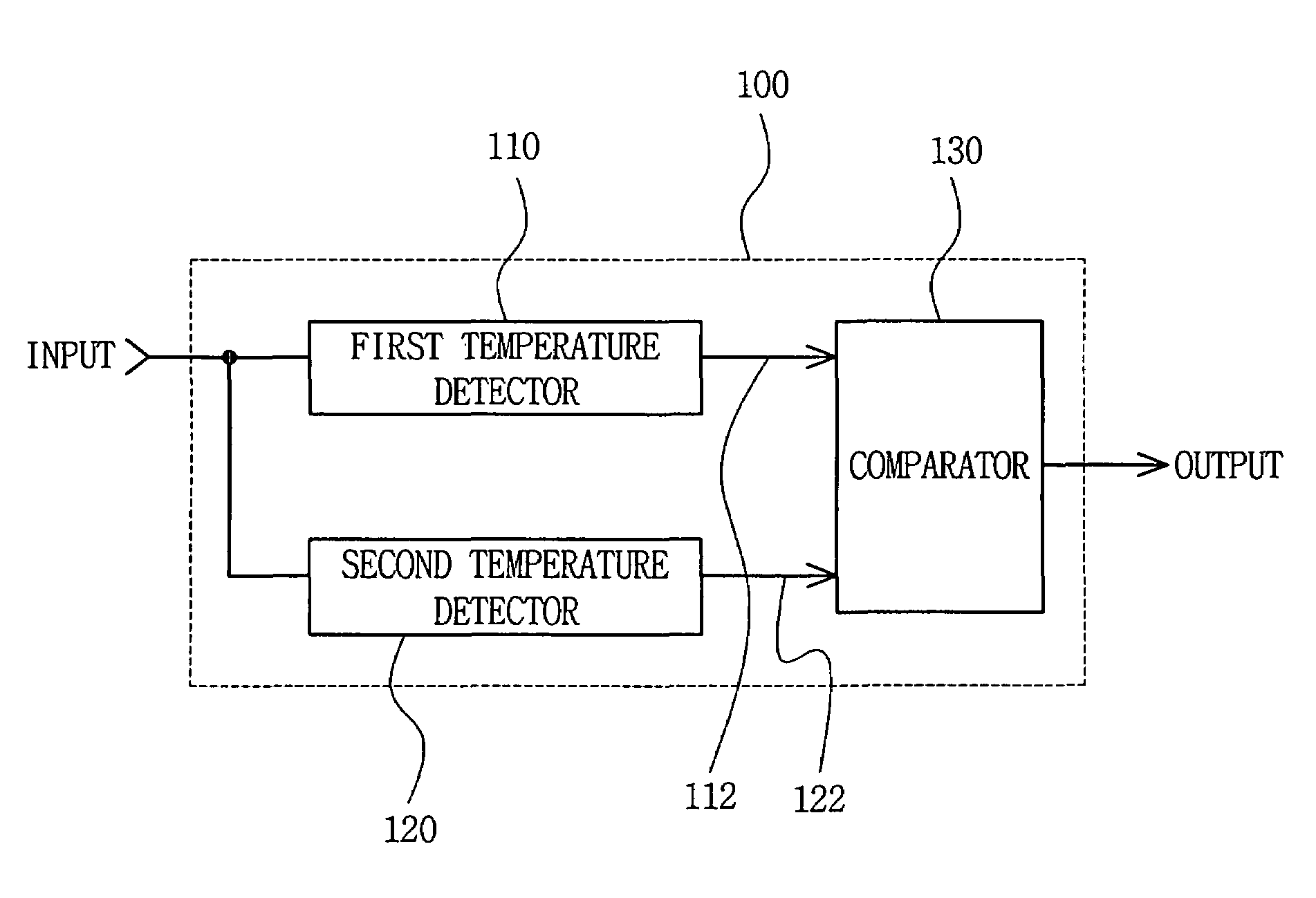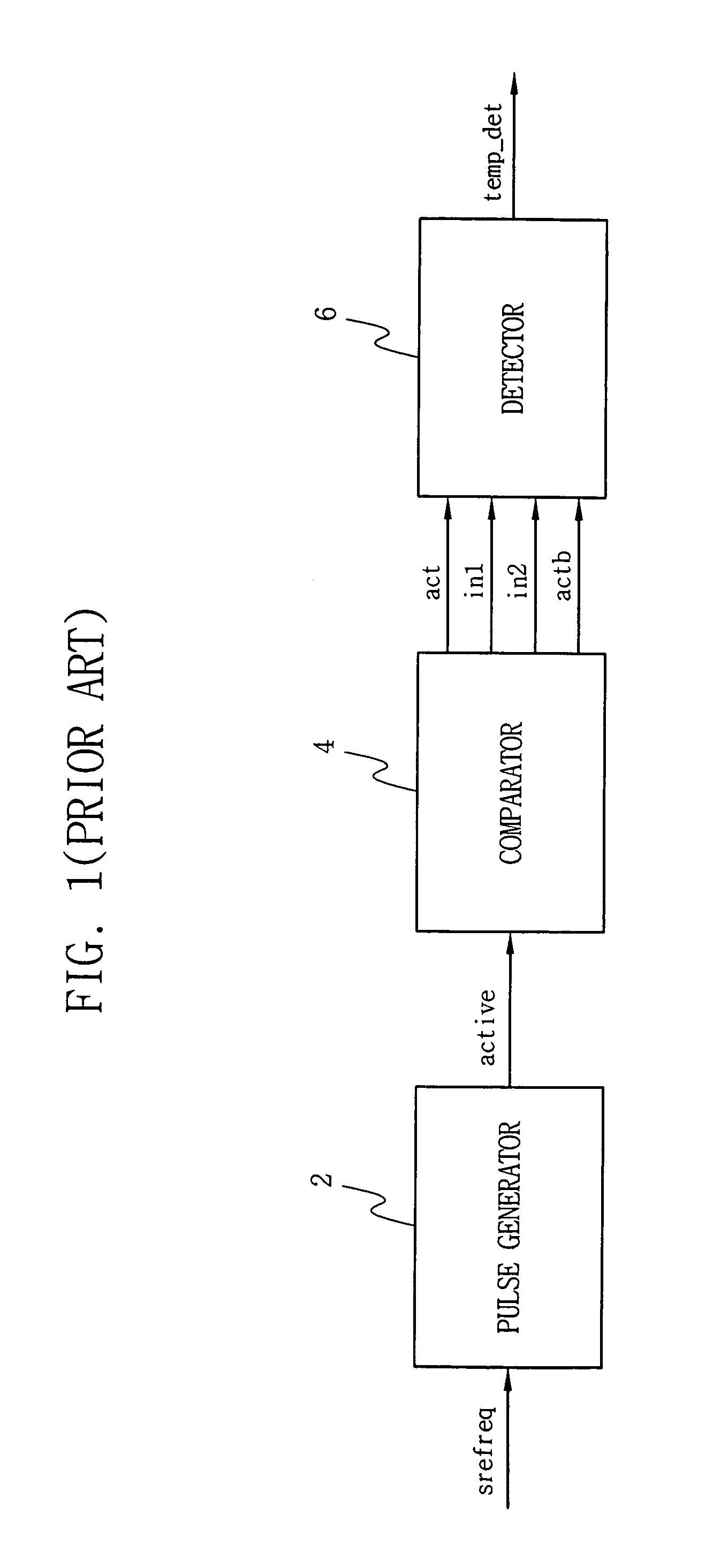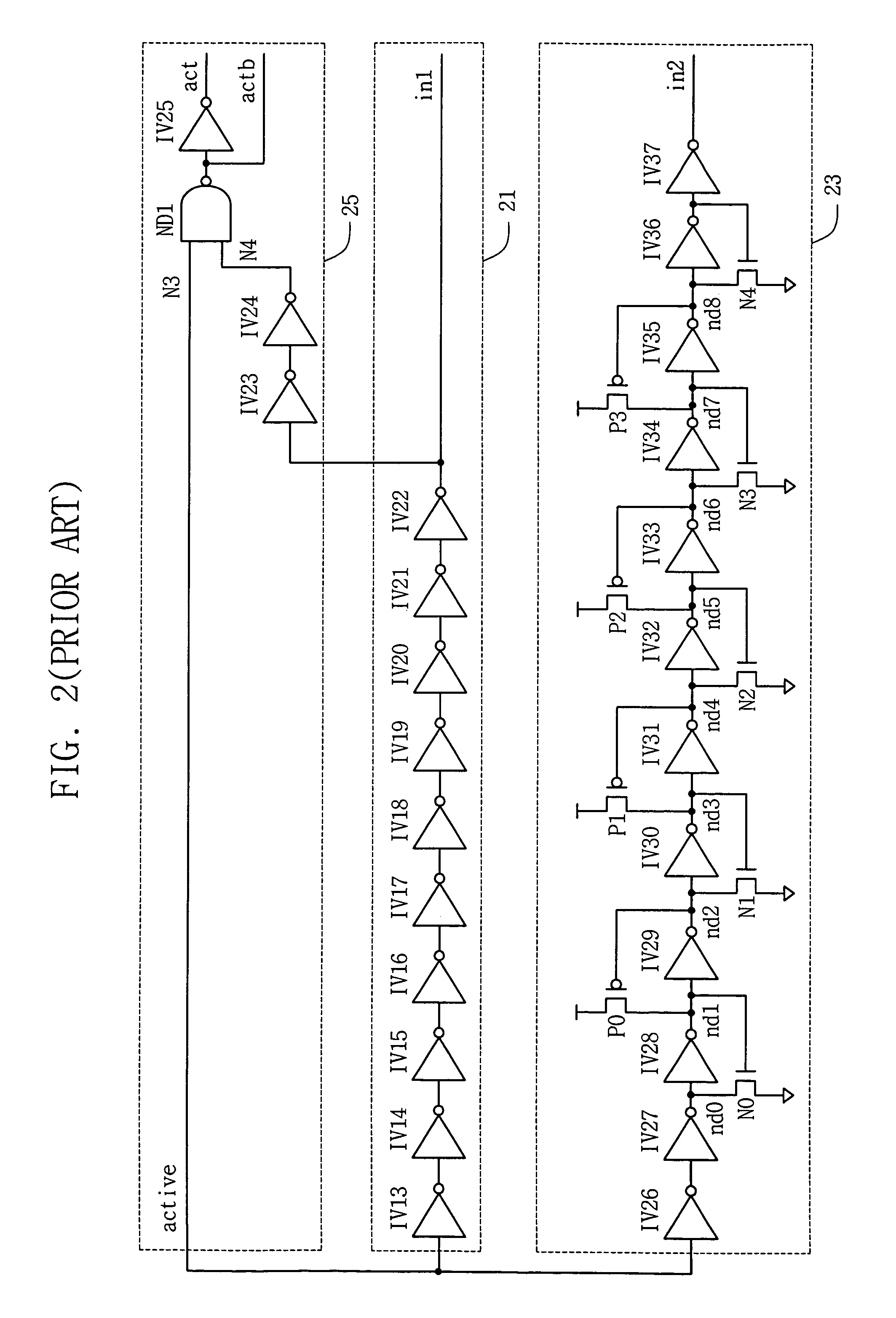Apparatus and method for sensing target temperature
a technology of target temperature and apparatus, applied in the field of temperature sensing, can solve the problems of data loss, unnecessary current consumption, and circuits not being used for low-power applications, and achieve the effect of more accurate sensing
- Summary
- Abstract
- Description
- Claims
- Application Information
AI Technical Summary
Benefits of technology
Problems solved by technology
Method used
Image
Examples
Embodiment Construction
[0041]FIG. 4 shows a circuit diagram of an inverter for analyzing a delay characteristic with temperature for the inverter, according to an embodiment of the present invention. FIG. 5 shows graphs of delay coefficient for different temperatures of the inverter of FIG. 4, according to an embodiment of the present invention.
[0042]The inverter of FIG. 4 is formed with a PMOS transistor PM1 and an NMOS transistor NM1 configured as illustrated in FIG. 4. An inverted output Vout is generated across a load capicitor CL from an input signal Vin. Referring to FIGS. 4 and 5, a delay change with respect to an operating voltage VDD for the inverter increases with temperature below a critical VDD voltage of about 1.3 Volts and decreases with temperature above 1.3 Volts. In addition, the delay change with VDD is positive above 1.3 Volts, and negative below 1.3 Volts.
[0043]FIG. 5 illustrates a delay coefficient SN(G)VDD correlated with delay change that indicates a slope for a graph of delay versu...
PUM
 Login to View More
Login to View More Abstract
Description
Claims
Application Information
 Login to View More
Login to View More - R&D
- Intellectual Property
- Life Sciences
- Materials
- Tech Scout
- Unparalleled Data Quality
- Higher Quality Content
- 60% Fewer Hallucinations
Browse by: Latest US Patents, China's latest patents, Technical Efficacy Thesaurus, Application Domain, Technology Topic, Popular Technical Reports.
© 2025 PatSnap. All rights reserved.Legal|Privacy policy|Modern Slavery Act Transparency Statement|Sitemap|About US| Contact US: help@patsnap.com



